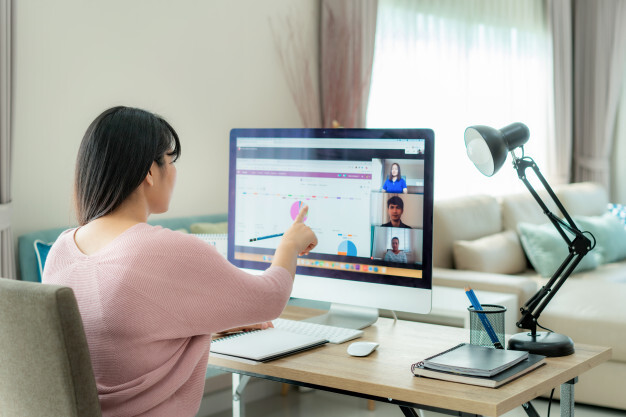Working it out
Lockdown has proved that many people can work efficiently from home. By making the most of new work practices to maintain productivity while ensuring staff receive the support and training they need to do their job, small businesses can make these arrangements work for employees as well as employers.
For some, working from home means less time spent commuting, less money spent on coffees and lunches and lower childcare costs. But for others finding space to work comfortably is a challenge, interruptions from children and other family members make it hard to concentrate, and team work can be problematic.
There is no ‘one size fits all’ solution, but with careful planning employers can help their staff deal with a way of working that will be with us for some time to come.
Speak up
We have all become used to virtual meetings over the last 12 months, but videoconferences need to be properly structured with an agreed agenda to ensure everyone knows why the meeting is taking place and the topics that will be covered so they can prepare properly.
Sharing of information and thoughts can be encouraged by the use of break-out rooms where smaller groups can talk among themselves. It might also be helpful to ask participants to send through questions in advance of the meeting to ensure the important points get covered.
Where meetings are always hosted by the same person it is important to change the running order regularly and encourage greater participation by asking questions of everyone in attendance.
Home-work balance
A number of recent surveys have suggested that people are working longer hours from home, so it is vital that staff are encouraged to switch off at the end of the working day. Looking ahead, employers could review how tasks are undertaken to make it easier for people to work remotely at least some of the time.
In companies where some staff are back in the office, it is important that they are treated the same way as those who choose to work from home, otherwise the latter group may feel they are being penalised despite continuing to do their job.
One of the upsides of home working is that it is easier for people to attend conferences and participate in training. Companies are also able to reduce their carbon footprint as they are consuming less energy and spending less on travel.
Mind your head
When location is no longer an issue, there can be a temptation to schedule back-to-back virtual meetings. This can lead to ‘video fatigue’ as employees feel trapped in an endless cycle of Zoom calls with no time for small talk or asking questions.
There are many reasons why employers like to have all their staff where they can see them, but this approach doesn’t work for everyone. For example, it can encourage presence above productivity among staff who want to be seen to be working the longest hours.
As noted above, working from home is not always easy. By recognising this, employers can help their staff be as productive as possible.




